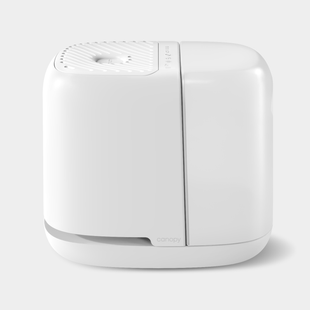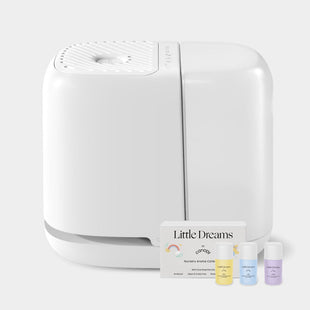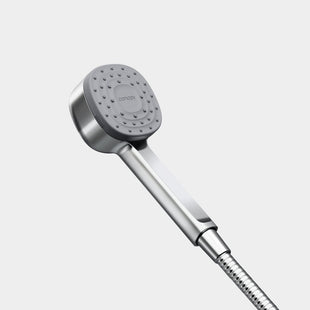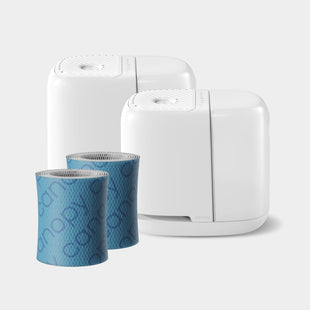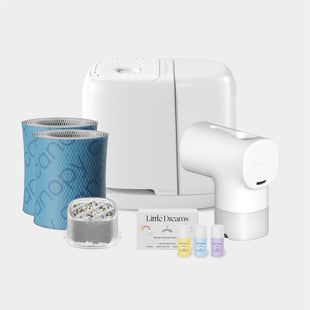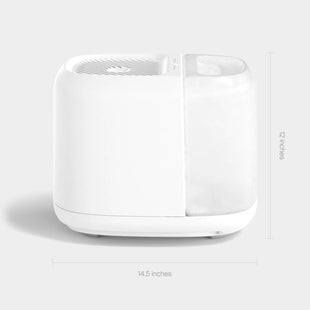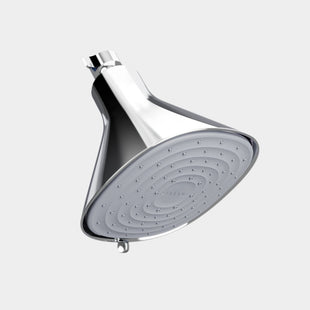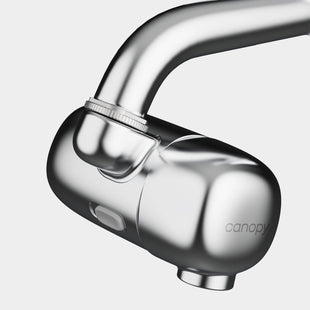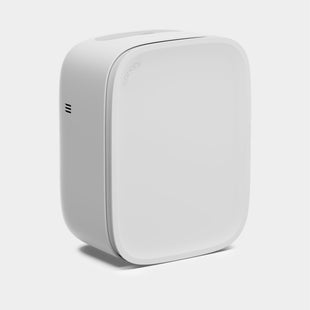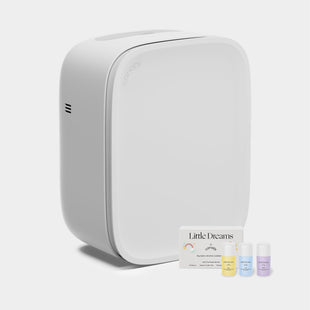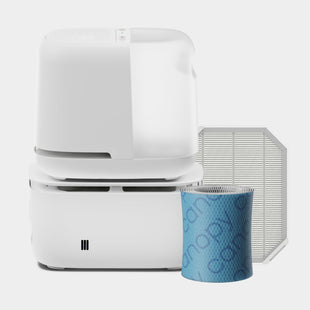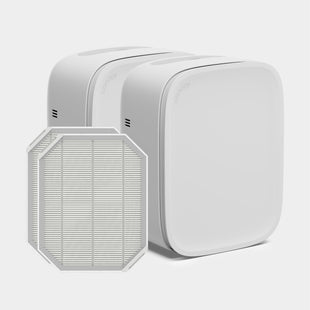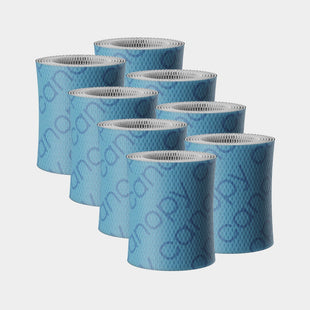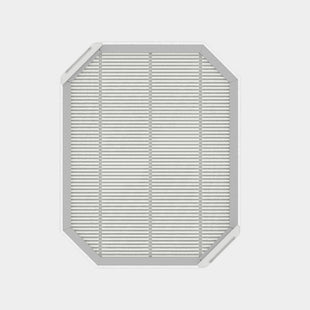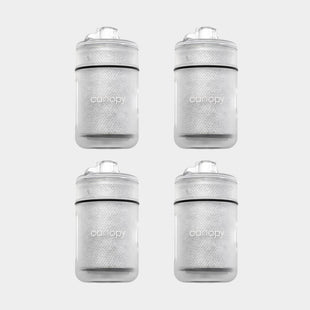We often acknowledge the effects of dry air on our body, our home, and our plants but we rarely think about the cause.
Dry air makes our skin flake, the wood in our home shrivel and crack, and our houseplants scream “I’m thirsty!”
In this post we are going to explain why bad air is, frankly, not great for you and answer your burning questions including:
- What causes dry air?
- What problems are associated with dry air?
- How do you increase humidity levels in the air?
Let’s dive in.
What Causes Dry Air?
First things, first: what causes dry air?
Higher temperatures can hold more moisture than lower temperatures. During the fall and winter months when the thermometer reads “sweater weather,” the moisture quickly disappears along with our cut-off shorts and flip flops.
The minute you feel a chill while binge watching Netflix on the couch is most likely the precise minute you head to your thermostat and switch on the heat (it’s simply too hard to focus on the plot with the shivers).
Pair lower temperatures with central heating and dry air can become a serious problem.
What Problems Are Associated with Dry Air?

Dry air causes a myriad of problems in your body, in your home, among your houseplants, with your children, and even among the “things” you collect in your home. Dry air can wreak havoc on your life without any remorse!
Dry air can cause the following:
Dry, flaky, and itchy skin
Dry scalp and dandruff
Brassy, flat hair with breakage
Dry, itchy eyes
Uncomfortable nosebleeds
Exacerbated cold and flu symptoms
Congestion or runny nose
High levels of static electricity
Wood damage (wood floors, wood beams, wood furniture, etc.)
Wall damage (bubbling or peeling paint)
Damage to your books and artwork
Congestion and runny nose in babies
Wilting of houseplants
The list goes on.
Maintaining optimal humidity levels between 40% and 60% will keep your home healthy, your body healthy, your kids healthy, your plants healthy, and keep you happy.
How Do You Increase Humidity Levels in the Air?
It is not uncommon to experience the symptoms of dry air long before you identify the issue. The effects of dry air on your health and home tend to sneak up on you.
As with most things in life, you cannot find a solution if you have not yet acknowledged the problem... That’s where a hygrometer comes into play. A hygrometer is a device that measures the relative humidity levels in your home so that you can adjust accordingly. You can buy a hygrometer at most home goods and appliance stores for a low cost or you can check your smart thermostat to see if it has a built-in hygrometer.
If purchasing a hygrometer is not an option, you can try to identify low humidity levels through good, old-fashioned observation.
Static electricity is a dead giveaway that your home humidity levels are too low. Low levels of moisture cause a build-up of electrical charge with nowhere to go, until WHAM! It seems that your hand only grazes the couch before electrical currents tremor through your body. When you increase humidity levels in your home, static electricity will significantly decrease.
So, how do you go about adding moisture to dry air?
Use a Humidifier
The tried-and-true weapon against dry air is a humidifier.
Humidifiers increase the relative humidity of a particular space by releasing moisture into the atmosphere. There are three kinds of humidifiers: ultrasonic humidifiers, evaporative humidifiers, and vaporizers.
Ultrasonic humidifiers work by vibrating a metal diaphragm at ultrasonic speed to create small water particles that are fanned from the machine and into the room.
Vaporizers boil water from the device's water tank to create a vapor. This vapor is pushed into the room and expelled as a warm mist.
Evaporative humidifiers are the healthiest, cleanest way to humidify and suction air from the room into the device. The device then pushes the air through a moistened wick, which adds water particles to the air. This newly hydrated air is then fanned back into the room. Voila!
Canopy humidifiers are an evaporative, no-mist solution that expel pure hydrated bliss into the air, without the mess of traditional humidifiers. Canopy’s innovative SPA™️ technology prevents mold build-up in the water tank while embedded UV lights and a disposable paper filter eliminates 99.9% of bacteria and contaminants that enter the water.
Find and Seal Gaps in Your Insulation

When was the last time you examined your home’s insulation?
If the temperature in your home fluctuates radically with the seasons, or you can’t manage to keep your home warm during the winter months without a hefty central heating bill, you may have an issue with your home’s insulation.
Slight cracks in the window sill or around the door frame are common places where your optimally humidified home air escapes into the great outdoors. In contrast, these openings also allow harsh, dry air to enter your home, which can alter temperatures and deplete your home of moisture.
You can examine your home’s insulation yourself, or you can hire a company to perform an in-depth home audit.
Additional Solutions
There are ways you can slightly improve your home humidity levels. To note: these DIY humidity tips are not as effective as a home humidifier or repairing cracks in your home insulation, though they will suffice in a pinch.
- Bring outdoor plants indoors. All plants release moisture into the air through a process called transpiration. Just as we inhale and exhale for survival, plants absorb moisture and release moisture into the atmosphere to regulate their internal processes. Bringing your plants indoors and spreading them throughout your home will slightly elevate humidity levels as your tender, green friends transpire to their heart’s desires.
- Boil a pot of water on your stove. Boiling water on the stove creates a makeshift vaporizer that can mildly improve humidity levels in the kitchen and living rooms. The water that evaporates into the atmosphere during the boiling process will temporarily improve moisture levels in the air.
- Keep your bathroom door open while showering. In the same vein, keeping the door open during your shower will allow the steam to migrate from your bathroom to your bedroom to temporarily improve humidity levels. You can also use this hack to improve infant congestion before resorting to manual suction.
- Air dry your clothes. When the dry air in your home just won’t quit, you can hang your clothes to dry. The lower levels of humidity will accelerate the clothes drying process absorbing the moisture from the damp clothes and, ultimately, improving humidity levels.


